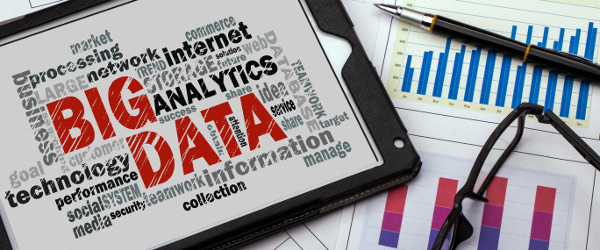
After years of collecting and compiling vast amounts of data, the time has come to benefit from this data. One of the key ways that Big Data can be made actionable is by implementing operational efficiencies and multiple improvements that can save money, increase income and save lives.
CBR looks at 5 key sectors, highlighting examples where Big Data has been utilised in order to improve infastructure and service.
Safety
In New York there were between 200,000 and 600,000 tenants living in illegally converted apartments, the issue being that the buildings could be fire traps in addition to being illegal. However, due to the owners being illusive and the city not effectively responding to complaints, there were occurrences of fires and death.
Data from multiple city agencies was used to compile The Risk Based Inspection System, a system which identifies buildings for inspection that pose greater risk. This system helps to prioritise 50,000 safety inspections by tracking – scoring – prioritising and scheduling inspection.
The data used evaluates construction material, whether the building has a sprinkler system, height and age of the building, previous date of inspection and occupancy. This can also track the building’s violation history and schedule follow up inspections. Other data sources include fire history and fire code enforcement actions.
Health
The medical industry is making big strides with Big Data in ways to make efficiencies; in both the UK and U.S money is being saved through data analytics.
A significant area that is being address is medical fraud, particularly in the U.S. By analysing the big data from Medicare billing, the authorities could find any aberrations. For every dollar spent to combat healthcare fraud, the U.S government has collected $8 in recoveries from forfeiture, asset seizures and fines. This has amounted to $4.3 billion in 2013 and a total of $19.2 billion over 5 years.
In the UK, Big Data is being used to improve care standards. The data that will be utilised will be that of all NHS patients based on an Opt Out system – the patient data will be automatically used, unless the patient opts-out.
Although there are issues with privacy and how personal data is being shared, the system is designed to enable the public to hold the NHS to account, and ensure that any unacceptable standards of care are improved.
Additionally, it is designed to improve the patients understanding of the outcomes of care, to identify who could be at risk of a condition -or who would benefit from a particular treatment.
There is also the aim to make sure NHS organisations receive the correct payments for the services they provide and also to guide decisions about how to manage NHS resources. This aims to better support the treatment and management of illness for all patients.
The NHS is still in the process of implementing big data analytics, having had to deal with numerous concerns over data use, however, it is expected that the NHS will be able to save billions.
Transport
The challenges facing transport systems around the world are related to the need to provide more efficient transportation services and better designed transport routes. Looking at Big Data will play an important role in making transport more cost and time effective.
Gatwick airport has been utilising data from both its passengers and third party retail stores, who upon request agreed to share data.
The data that Gatwick airport has been utilising includes the data from passenger numbers – how they got to the airport, how they leave, male or female etc. Additional data includes purpose of travel, which terminal they check-in at, as well as airport data including the size of the terminals, how many desks the terminal has and how many staff man those desks..
The data has been used to increase the number of passengers through security from 165 per hour to 600, with the retail stores benefiting from the extra time given to passengers to shop. The analysis of the data has also enabled the airport to increase flights per hour, from 50 to 55, and has enabled an additional 2 million passengers to travel each year. Gatwick implemented the Amadeus cloud-based system which analyses real time data to improve operations.
Other transport efficiencies looking to be made through the use of Big Data involve the City of Boston and private firm Uber. Both parties have agreed to share data, with the data consisting of anonymised trip level data, Zip Code Tabulation Area, when the trip began, when it ended, trip duration and distance travelled.
With Uber claiming that data is collected from the 100,000 journeys made in each of the largest cities that it operates in – the data collected is vast. The idea behind the sharing of the data is to improve Boston’s road systems, infrastructure, transport routes and to reduce casualties on the roads, as well as building towards smart cities.
Retail
The data available to retailers comes from web sites, in-store video and analytics systems, customer demographics, mobile location data from tablet computers and smart phones, social media, weather, and embedded sensors.
Data collected from all these sources is being analysed and used to create better customer focused shopping, more effective systems for delivery and numerous efficiencies.
Retailers such as Walmart are using Big Data analytics to optimise its inventory based upon the specific tastes and seasonal preferences of customers in each geographic area. Walmart has been increasing the scale of its Big Data collection for years, in 2012 they moved to a 250-node Hadoop cluster.
Walmart combines public data from the web, social data and proprietary data such as customer purchasing data and contact information. As over 200 million customers visit Walmart stores each week, the data that the company can collect is vast.
Williams Sonoma have been mining Big Data repositories of customer purchase data, clicks, click-throughs, demographics and web browsing history. This leads to predictive models for each customer being created, which then informs targeted emails being sent.
Another area where big data is impacting retail is in predicting customer purchases and customer micro-segmentation.
Target stores in the U.S recently analysed historical purchase data and identified 25 shopping items which could be used to indicate when a shopper is pregnant, leading targeted, pregnancy specific coupons and special offers being sent to those shoppers via email.
Other areas in which Big Data is helping retailers is cross selling and upselling, location based marketing through geographical location data, pricing optimisation through connected smart shelves to big data applications. The shelves will be able to automatically update prices based on dynamic market conditions.
Moving away from the shop floor, retail businesses have been using big data to help with supply chain and logistics optimisation. Sensors in delivery trucks and Radio frequency ID tags on products can help stores know the exact location of products in transit.
Retail fraud can also be spotted through monitoring – by modelling and analysing high volumes of data from transactions and extracting features and patterns, retailers can prevent credit account fraud.
Financial
Big Data has been used in the financial markets for a number of years, some would argue they have been pioneers in Big Data use. However, due to strict data protection laws there are limitations on how they can use it.
The challenges facing finance is the consolidation and streamlining of inefficient operations that have spawned from mergers and the upgrading of systems. The creation of new products that replace existing, declining products and adhering to financial regulations.
One way in which the finance market is using Big Data is with precision marketing, where big data alters the information structure, allowing financial institutions to collect and analyse customer data. This, therefore, provides a more individualised and tailored service to the customer.
Danske Bank implemented STATISTICA in 2011, a software solution designed for risk modelling and reporting, providing real time analytical data. The system from StatSoft, was designed to help reduce risk in credit scoring. The concept of applying big data analytics should make the data work easier in areas of predicting risk, detecting fraud, and making decisions regarding credit.
For example, with making decisions regarding credit, the system will be able to forecast the behaviour of a new credit applicant by predicting loan-default choices or poor-repayment behaviours, at the time the credit is granted.
Big Data in risk management plays an extremely important role and the better the data and analytics, the more accurate it can be. In this process, Big Data reworks the traditional risk management model with cloud computing that assists in creating the most accurate risk estimation at the lowest cost.






